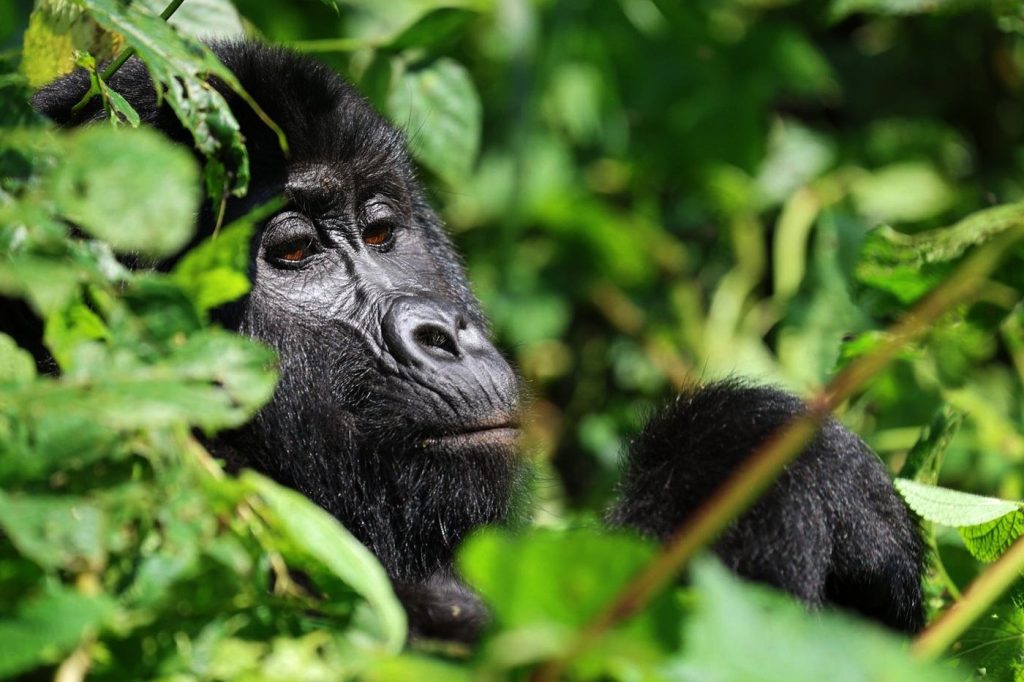BWINDI, Uganda – The plight of sick or injured mountain gorillas brings concern among local residents living in this mountainous region, home to the endangered species. With many of the gorillas having been given names, the ability to humanize their suffering creates a strong emotional connection between the animals and the community. Local ranger-guides, like Joyleen Tugume, emphasize the significance of gorillas, stating that whenever a gorilla falls ill, the entire community empathizes, eager to understand the cause of the animal's distress.
Tourism plays a crucial role in the conservation of mountain gorillas in Uganda. Tourists seeking to observe these magnificent creatures pay high permit fees—$800 for foreign non-residents—which directly support local economies. A revenue-sharing policy ensures that funds from these permits benefit the surrounding communities, with $10 allocated for community projects and a share of 20% from all park entry fees. This financial incentive has transformed former poachers into conservation advocates, facilitating a decline in poaching and a rise in community involvement in wildlife protection.
Philemon Mujuni, a reformed poacher, offers a testament to this transformation. Once involved in hunting the very same gorillas he now protects, Mujuni recalls how he perceived them as threats in his youth. The killing of Rafiki, a beloved gorilla in 2020, acted as a catalyst for change. It prompted Mujuni and other former poachers to found an organization dedicated to protecting gorillas, highlighting their significance over other animals. They now act as community watchers, helping to detect and prevent illegal activities within the park.
Among the 128 members of this reformed poachers’ group, Peter Tumwesigye advocates for strict penalties against anyone responsible for the death of a gorilla, underscoring the importance of setting a precedent to deter future harm. The mountain gorilla population has seen a positive change, growing to over 1,000 individuals since 2018, after being classified as endangered instead of critically endangered. Approximately half of the world's mountain gorilla population resides in Uganda, primarily in Bwindi Impenetrable National Park, a UNESCO World Heritage Site known for its habituated gorilla groups.
In Bwindi, 27 groups of gorillas can be closely observed by visitors, while Mgahinga Gorilla National Park, the only other national park in Uganda with gorillas, hosts just one family. Renowned for its sustainable conservation efforts, Bwindi regularly tracks the primates, with ranger-guides like Tugume dedicating their work—even on holidays—to ensure the safety and well-being of the gorillas. Her role includes educating tourists on gorilla behavior and the complex social dynamics among the groups.
At the Uganda Wildlife Authority's offices in Buhoma, ranger-guides and porters assemble each morning, ready to assist tourists. The economic impact of gorilla tourism is profound, helping foster trust within the community and raising awareness about conservation efforts. Gessa Simplicious, a conservationist with the Uganda Tourism Board, stresses the importance of gorilla-related income for community development and conservation initiatives.
As the mountain gorilla population continues to stabilize, the collaboration between local communities and wildlife authorities serves as a model for conservation success, providing a hopeful outlook for the future of these endangered primates in their native habitat.










